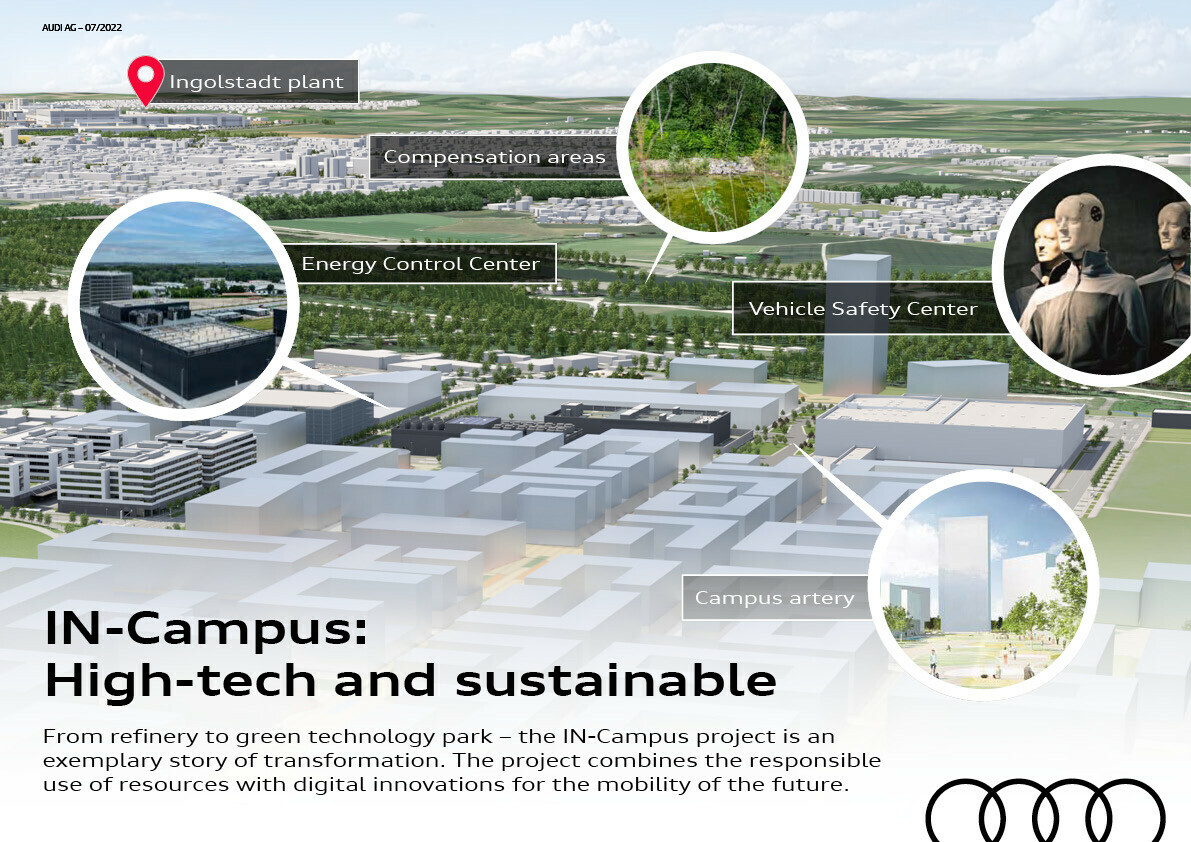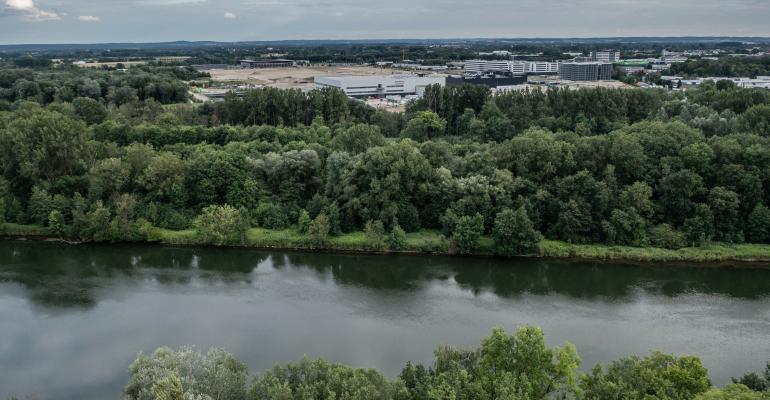Audi is converting a former oil refinery in Germany into an ecological haven exploring the array of automotive-related green technologies of the future.
The automaker says the IN-Campus technology park near its Ingolstadt, Bavaria, headquarters also will be a center for ecological and sustainable renewal.
With environmentally friendly soil remediation now concluded on an area previously polluted by heavy industry, it creates a modern space for a wide range of fields, from vehicle safety to intelligent networking on an area of 148 acres (60 ha). The site’s smart energy concept includes renewable energies, waste heat recovery and heat storage. Another 37 acres (15 ha) will become a nature and landscape area.
The site had been used by the Bayernoil refinery in Ingolstadt but is now a joint venture between Audi and the city aiming to address issues such as digital innovations and sustainability. It boasts a 452,000-sq.-ft. (42,000 sq-m) idea factory for future technologies. The automotive software company CARIAD already has moved in.
The A 9 highway in the immediate vicinity has served for years as a digital test field for the development of automated driving. The “First Mile,” a development and demonstration route for 5G-based mobility applications, runs from the IN-Campus toward the highway, practically extending the test field right to the campus grounds. Also under construction is the Vehicle Safety Center with a modern crash-test site, which will offer Audi a wide range of opportunities in the development of its vehicles.

Clearing Polluted Soil
A total of 54 acres (22 ha) of the site is polluted and in need of remediation, studies show. The site has been undergoing remediation since 2016. A total of 900 tons of heavy oil, 200 tons of volatile pollutants and 220 lbs. (100 kg) of perfluorinated chemicals already have been removed in an environmentally sound manner. About 45,930 cu.-yds. (444,000 cu.-m) of soil also were removed – the equivalent of more than 32,000 truckloads.
Energy Revolution
The vision of the IN-Campus is one of a zero-energy campus initially using a solar-electricity system on the green roof of the Energy Control Center. While the IN-Campus also obtains green electricity from the regional utility, in the future the technology park will generate as much renewable energy as it consumes. Additional photovoltaic systems, waste-heat recovery, energy storage and smart control systems are further components of the zero-energy strategy.
The modular energy concept relies on three basic building blocks: the LowEx network, reversible heat pumps and a cross-energy concept. The LowEx network, a water-based piping network and reversible heat pumps are used to heat IN-campus buildings with waste heat from other buildings. In the future IT Center, expected heat output will reach 2 megawatts.
The treatment method for groundwater purification also has a thermal application. The 10 wells extract a total of up to 52,830 gallons (200 cu.-m) of water per hour from below ground. Before it seeps away again after treatment, this water is fed into the LowEx network and used for cooling or heating by means of heat exchangers. This reduces the need for fresh groundwater, in turn lowering expenses for this valuable resource. The groundwater plant’s heating and cooling capacity is about 1.5 megawatts.
The IN-Campus has received an award from the German Sustainable Building Council for its innovative and sustainable approach.





